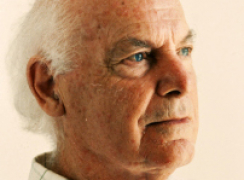Near-death experiences during cardiac arrest - from flashing lights to life flashing before one's eyes - may be down to carbon dioxide, a study finds. Examination of 52 patients found levels of the body's waste gas were higher in the 11 who reported such experiences, the journal Critical Care reports.
The Slovenian researchers hope to move on the debate over why so many cardiac arrest patients report the experiences. Reasons previously suggested for the phenomenon include religion and drugs. Those who have had near-death experiences report various encounters, including seeing a tunnel or bright light, a mystical entity, or looking down from the ceiling at the scene below in an "out of body" experience. Others describe a simple but overwhelming feeling of peace and tranquillity. It is thought between one in ten and nearly a quarter of cardiac arrest patients have experienced one of these sensations. No religion In this latest study, published in the journal Critical Care, a team looked at 52 cardiac arrest patients. Eleven of these reported a near-death experience.
And while anoxia - in which brain cells die through lack of oxygen - is one of the principal theories as to why near-death experiences may occur, this was not found to be statistically significant among this small group of patients. Instead, the researchers from the University of Maribor found blood carbon dioxide levels were significantly higher in the near-death group than among those who had no experience. Previous research has shown that inhalation of carbon dioxide can induce hallucinatory experiences similar to those reported in near-death experiences. Whether the higher levels of carbon dioxide among this group of patients were down to the cardiac arrest itself or pre-existing is unclear. "It is potentially another piece of the puzzle, although much more work is needed," said the report author, Zalika Klemenc-Ketis. "Near death experiences make us address our understanding of human consciousness so the more we know the better." Cardiologist Dr Pim van Lommel, who has studied near death experiences extensively, described the findings as "interesting". "But they have not found a cause - merely an association. I think this is something that will remain one of the great mysteries of mankind. The tools scientists have are simply not sufficient to explain it." In the UK, a large study is ongoing into whether cardiac arrest patients genuinely do have out-of-body experiences. The research includes placing images on shelves that can only be seen from above. The brain activity of 1,500 patients will be analysed afterwards to see if they can recognise the images. Dr Sam Parnia, who is leading the project at Southampton University, says he hopes to establish whether consciousness can in fact exist as a separate entity to the body. Ref BBC/ Health/ 2010 Blogger Reference Link http://www.p2pfoundation.net/Multi-Dimensional_Science | |||
Exploring Mysticism, and Parapsychology.This blog is also an attempt to promote awareness of a Modern Universal Paradigm known as Multi-Dimensional Science. It offers a "Scientific" testable Hypothesis for a more "objective" understanding of claimed Psychic and Spiritual Phenomena. A link to this subject should be found onsite or alternatively easily traceable via a word search. Please note that the Internet articles here may not reflect the views of the Blogger.
Tuesday, 12 March 2013
New light on near-death flashes
Subscribe to:
Post Comments (Atom)
"Scientific Mysticism" of Michael Whiteman
The previous post gave reference to the book below by an academic. It is similiar but not identical to the ideas of my paradigm known as ...

-
Category: Meditation by Swami Sivananda Swami Sivananda Saraswati (Sep 8, 1887—Jul 14, 1963), was an Indian spiritual ...
-
For a large list of links sorted into categories see this further reading . Many quotes and links from a Survey of the science and ph...
-
The previous post gave reference to the book below by an academic. It is similiar but not identical to the ideas of my paradigm known as ...

No comments:
Post a Comment